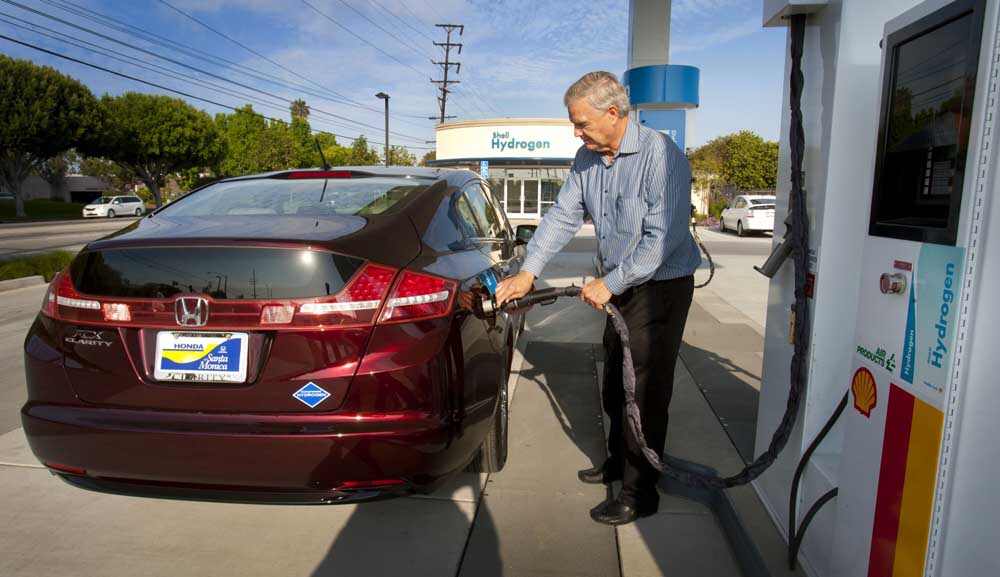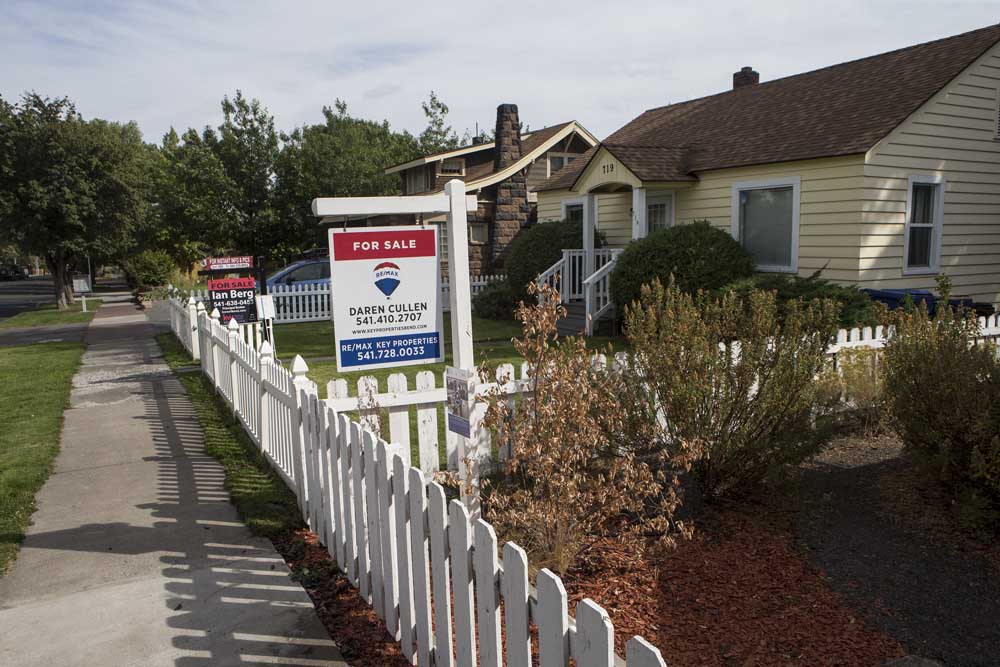Few stations and $200 to fill up: Life on California’s ‘hydrogen highway’
Published 1:15 am Saturday, June 15, 2024

- In February, Shell closed its seven retail hydrogen stations in California — including the only station serving the Berkeley area. Photographer: Tim Rue/Bloomberg
As California’s longtime chief climate regulator, Mary Nichols once championed hydrogen fuel cell cars. Just a few years ago, as the state spent tens of millions of dollars on a planned network of fueling stations dubbed “the hydrogen highway,” Nichols was extolling the 300-mile range and quick refueling time of her own hydrogen ride, a futuristic Toyota Mirai.
Today, though, Nichols drives a battery-electric Ford Mustang Mach-E. It too offers 300 miles of range.
Trending
“I would have no problem driving a hydrogen car again but I don’t know that I would feel like I had to,” says Nichols, who served multiple terms as chair of the California Air Resources Board before stepping down in 2020. “Right now, I don’t think it would be a good bet to assume that there’s going to be a big shift to hydrogen vehicles except for heavy-duty trucks, where being able to move a lot of weight is important.”
Despite billions of dollars of investment, fuel cell cars in the US are disappearing in the rearview mirror, overtaken by battery-electric models and stalled by hydrogen shortages and soaring fuel prices. Last year, drivers bought just 3,143 hydrogen cars in California — the only state that sells them — compared with 380,000 BEVs.
Hydrogen’s proponents aren’t throwing in the towel. Toyota and Hyundai are pushing fuel cell models, albeit at heavy discounts, and Honda just announced a hydrogen hybrid version of its best-selling CR-V. California continues to build new infrastructure. But for drivers and would-be car buyers, the practical experience of going hydrogen-electric is bad and getting worse.
“It’s clear what technology has won in the marketplace,” says David Reichmuth, a senior engineer with the Union of Concerned Scientists’ clean transportation program. “If we want to go as fast as possible to decarbonize, then the plug-in electric vehicle is clearly the technology with the infrastructure available to do that now.”
Fuel cells work by converting compressed hydrogen gas in an onboard tank into electricity that powers the vehicle’s motor. Carmakers started developing them in the 1990s after California passed a zero-emissions vehicle mandate to fight smog. Those efforts accelerated in the wake of the state’s landmark 2006 climate law, which ordered a sharp drop in greenhouse gas emissions.
History of hydrogen
Trending
The first hydrogen car efforts were bespoke. In 2006, I drove a prototype of a hand-built Mercedes fuel cell car that cost $1 million. Then in 2013, California enacted legislation allocating $20 million a year to finance 100 hydrogen stations. Soon Honda, Hyundai and Toyota started selling or leasing hydrogen cars in the only state that offered the ability to fuel them.
In 2018, Governor Jerry Brown set a target of 200 hydrogen stations by 2025, a goal to which the state has committed nearly $257 million. But last year Shell Plc quietly declined a $41 million state grant to build 50 stations, and California scaled back its target to 130 stations by 2027. In February, Shell shuttered six of its seven retail hydrogen stations in the state. A total of 66 stations remain, but 12 have been offline for more than 30 days and others sporadically shut down due to supply shortages or equipment problems.
By contrast, California boasts just over 105,000 charging stations for plug-in vehicles. Battery-electric models accounted for 21% of new car sales in the state last year and Tesla’s Model Y and Model 3 were California’s top two best-selling vehicles.
Even for functional hydrogen fuel stations, downtime is routine. On April 2, for instance, 16 of the state’s 54 stations in operation were closed, according to real-time data from the Hydrogen Fuel Cell Partnership. Southern California sees about half of its stations go offline on any given day. In Northern California, drivers in affluent Marin County rely on a single fuel station, which on one afternoon in late March had only enough hydrogen to fill up a few cars.
Across the state, the closures and downtime are leaving drivers scrambling to find fuel.
Complaints about fuel prices are just as common. Filling up a Mirai, a Hyundai Nexo or a Honda FCX Clarity runs a California driver about $200 — the equivalent of paying $14.60 for a gallon of gas.
“The car is AMAZING but the fueling infrastructure and cost of hydrogen per mile is TERRIBLE,” wrote one Mirai owner on Facebook.
The sky-high fuel prices are discouraging even hardcore hydrogen enthusiasts like Tina Imahara.
A documentary film editor in Southern California, Imahara bought her first fuel cell car, a 2017 Mirai, after working on environment-themed movies. “The car itself is incredible,” she says. “I lived 84 miles from my closest station when I first got my first one, so I really had to plan. There were some close calls when I was running on fumes.”
By the time Imahara upgraded to a 2021 Mirai — which came with a $15,000 fuel card — the number of stations had grown and she now lives close to one. But as hydrogen fuel prices soared last year, she reluctantly traded the Mirai for a battery-electric Toyota bZ4X SUV.
Other carmakers are also hedging their bets with hydrogen. Hyundai sells the Nexo SUV, which debuted in the U.S. in late 2018 and now boasts up to 380 miles of range.
Toyota, which has placed a major bet on hybrid cars, also remains committed to hydrogen. Since introducing the Mirai in 2015, the carmaker has sold more than 14,000 of them in California; the most recent models get up to 400 miles per tank.
“We not only see fuel cells as great for the light vehicle, but we also see it as an option for heavy-duty vehicles and we also see it as a great option for electrical generation,” says Tim Bliss, general manager of Toyota vehicle marketing in North America.
California has no plans to walk away from hydrogen. The state is still spending tens of millions of dollars a year on infrastructure and hydrogen production, which can also be used to electrify heavy-duty trucks.
“A big priority for us right now with regard to hydrogen fuel cell electric vehicles is to improve the reliability and performance of the existing refueling network, so that those who purchased or leased hydrogen vehicles can be confident they will be able to refuel when needed,” says Hannon Rasool, director of the California Energy Commission’s fuels and transportation division.
The state is also trying to green the hydrogen itself. Most of the hydrogen dispensed in California is gray, meaning it’s produced from natural gas, according to a state report released in December. Rasool says California has awarded $22 million for green hydrogen projects, including three plants that will tap renewable electricity to power electrolyzers, which produce hydrogen from water. The Biden administration also awarded the state $1.2 billion to create its own hydrogen hub.
Whether that means fuel cell rides can ever catch up with battery-electrics in the race to decarbonize cars remains to be seen. But some superfans are watching closely. If fuel prices do drop, Imahara plans to jump back on the hydrogen highway. She likes that hydrogen is produced in the U.S. and that fuel cell cars don’t rely on metals controlled by other countries. “The future needs to be hydrogen and not completely battery,” she says.








